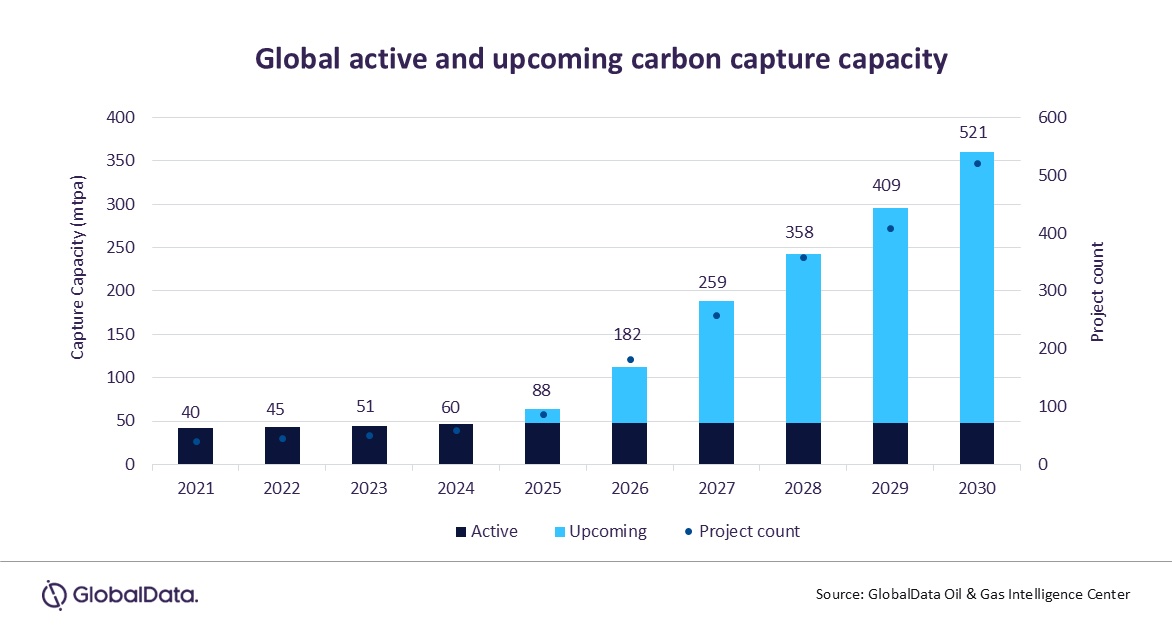Carbon capture, utilization, and storage (CCUS) is rapidly emerging as a key solution in the global energy transition, offering a realistic path to decarbonize hard-to-abate sectors such as cement, steel, refining, and thermal power generation. Oil and gas companies are playing a leading role in the development and deployment of CCUS. As of 2024, more than 70 percent of the operational and planned CCUS facilities are associated with energy assets. This indicates a growing commitment by the energy sector to reduce its emissions intensity through innovation in carbon capture and storage technologies, says GlobalData, a data and analytics company.
GlobalData’s Strategic Intelligence report, “Carbon Capture and Storage,” reveals that over 50 commercial-scale carbon capture projects were active within the global energy sector alone as of 2024, representing a cumulative carbon capture capacity of approximately 45 million tonnes per annum (mtpa). Assuming that all the proposed projects come online, the global carbon capture capacity in the energy sector could rise to nearly 316 mtpa by 2030.
Ravindra Puranik, Oil and Gas Analyst at GlobalData, comments: “Unlike consumer-driven clean energy trends, CCUS adoption is largely influenced by regulatory and economic frameworks, with limited visibility to end users. Policies such as the EU Emissions Trading System (ETS), Canada’s carbon pricing mechanism, and the US 45Q tax credit have been instrumental in unlocking commercial opportunities for CCUS. These frameworks have helped offset the high capital and operational costs of CCUS deployment, particularly in energy-intensive industries, and are driving the emergence of large-scale projects globally.”
Leading oil and gas players such as ExxonMobil, Occidental Petroleum, and Equinor have taken early initiatives in CCUS, supported by engineering and service companies like Technip Energies, Mitsubishi Heavy Industries (MHI), and SLB. These firms are leveraging their deep expertise in industrial-scale project delivery to develop and execute carbon capture strategies across upstream and downstream operations.











